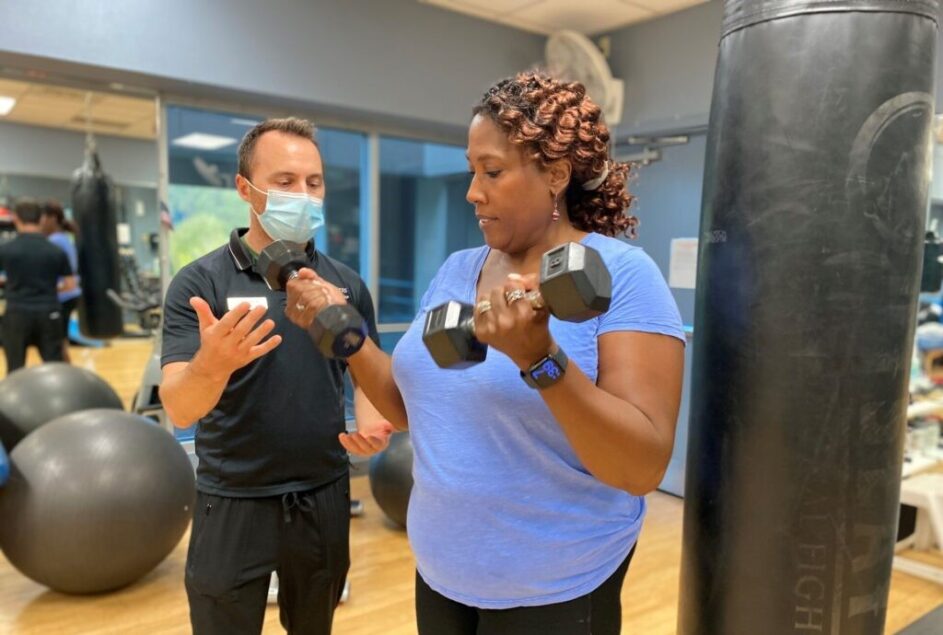It’s happened to most of us. We get serious about reaching health and fitness goals, then give up before we get there.

Chris O’Hearn
Life gets in the way, it’s harder than we expected or maybe the results aren’t happening as quickly as we’d like.
Strange as it sounds, maybe our goals aren’t big enough. Here are several tips for setting goals in the new year.
Set Long-Term Goals First
For most of his career as a personal trainer and life coach at Fort Sanders Health and Fitness Center, Chris O’Hearn has seen clients focus on the short win rather than the long game.
“A person sets a goal to be ready for summer in a few months, or to lose weight as quickly as possible, or to train for a marathon – and those are amazing things,” O’Hearn says. “But I ask, ‘What happens after?’”
It turns out that the best plan for losing weight and building strength, or just about anything else in life, is a combination of short-term goals and long-term goals. Setting both helps create a realistic roadmap for lasting results. And, the best diet or exercise regimen is the one you will stick to in the long-term.
Set Attainable Short-Term Goals
Plan long-term goals first, then break it up into smaller, “bite-sized” short-term goals that will help get you there. Here’s an example:
- Five years: My goal is to be an accomplished runner so I can be healthier, live longer and stay in shape.
- Two years: My goal is to run 26.2 miles in the Covenant Health Knoxville Marathon.
- One year: My goal is to run 10.1 miles in the Covenant Health Knoxville Half Marathon.
- This year: My goal is to run 3.1 miles in the Covenant Health 5K.
- This month: My goal is to increase my mileage every week.
- This week: My goal is to run one mile on at least three days this week.
Once you’ve gathered your short and long-term goals, you’ve created a roadmap that eliminates the guesswork. “When someone asks why you’re running, you always have an answer – helping you stay committed,” O’Hearn says.
Keep At It – Don’t Quit!
If you find yourself in a challenging position or tempted to give up on your goal, then identify the hurdle or hiccup that is keeping you from achieving the next short-term goal.
“The reason we fail is often that people become too committed to the wrong things: the short-term results instead of committing to living your life to a higher standard for the rest of your life, not just when it feels convenient,” O’Hearn says. “Start by doing, understand what you want for the long term, and leave your fear of failure at home the next time you think you might face a challenge.”
After all, a setback isn’t a failure unless you turn it into one. “There is no failure, only feedback,” O’Hearn says. “It’s all information on how to keep choosing yourself instead of finding ways to give up on yourself.”
For more information, visit the Fort Sanders Health and Fitness Center website, or check out these resources:
Dietician Says Healthy Eating Isn’t as Expensive as You Might Think
Weight Loss Tips from our Bariatric Services Team
Learn about the Covenant Health Bariatrics Services Team
Need help managing health goals? Find a primary care physician near you.
Covenant Health provided information and quotes for this article.

